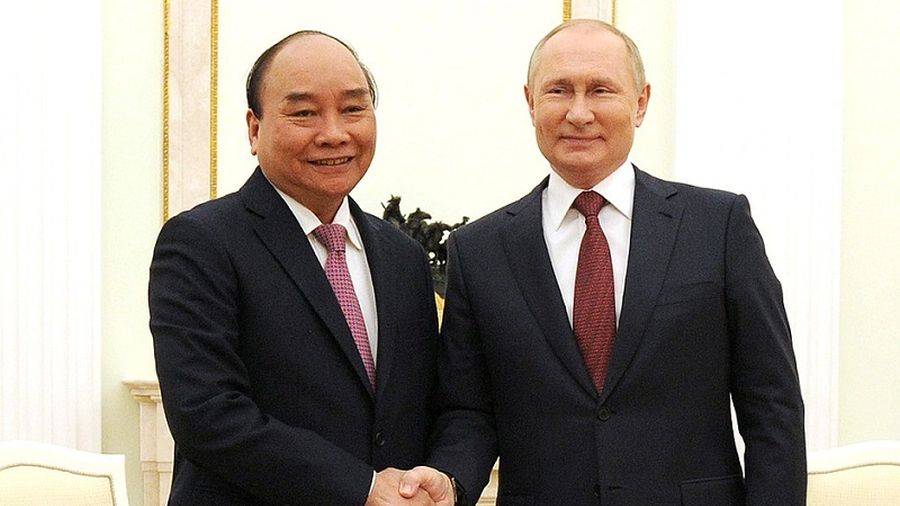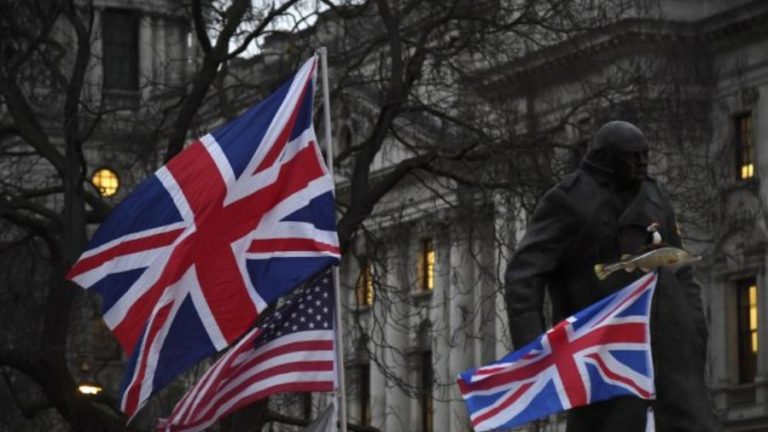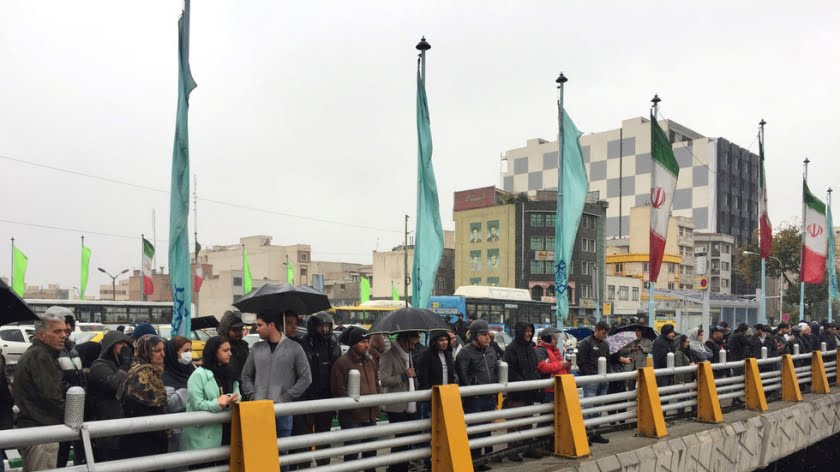The Russian-Vietnamese Strategic Partnership Advances Moscow’s Greater Eurasian Vision
It’s the case study which proves the concept being put forth, namely that the Kremlin can responsibly ‘balance’ very sensitive and complex affairs all across the Eurasian supercontinent. The wider the awareness becomes of that country’s success in this respect, the quicker that its grand strategic vision will unfold, which will in turn accelerate the emerging Multipolar World Order.
Vietnamese President Nguyen Xuan Phuc visited Moscow this week to meet with his Russian counterpart for talks about the future of their historical strategic partnership. TASS reported that they agreed to a blueprint for comprehensively expanding their relations through 2030. The resultant document covers cybersecurity, economic, energy (including nuclear), financial, institutional, military, and transnational non-state security (e.g. crime, drugs, terrorism) cooperation. The end result is that the Russian-Vietnamese Strategic Partnership continues to advance Moscow’s vision of the Greater Eurasian Partnership (GEP), particularly in the direction of ASEAN.
The Kremlin envisions itself becoming the supreme “balancing” force in the supercontinent across the 21st century, to which end it carefully maintains equally excellent relations with various pairs of rival countries, particularly China and Vietnam in the present context. Both countries are Russia’s strategic partners yet they’re also embroiled in a bitter dispute over parts of the South China Sea. Nevertheless, Russia has high-level security partnerships with both of them that are aimed at maintaining the balance of power in order to promote a political solution to their bilateral issues. This practice of “military diplomacy” is pragmatic and contrasts with the American model.
The US usually prefers one country in any given pair of rivals, arms them to the teeth, and subsequently encourages them to resort to military means in order to advance their position in whatever dispute they might be involved in. Washington attempted to employ this regionally destabilizing model of “military diplomacy” with Hanoi but was rebuffed. Vietnam not only has no interest in militarily provoking China using American arms, but it also wisely understands that such means in general are not the wisest way to resolve such issues. Moreover, most of its military is dependent on Soviet and Russian arms, so radically transitioning to American wares could lead to interoperability issues in the interim.
To be clear, neither Russia nor Vietnam have any hostile intentions against China, which they made explicitly clear in this week’s strategic partnership document that they agreed to. TASS reported that it contains the clause that “Russia and Vietnam do not enter alliances and do not sign agreements with third countries in order to carry out actions that harm each other’s independence, sovereignty, territorial integrity and basic interests.” It also notes that “the development of Russian-Vietnamese relations is not aimed against any third side.” China has understandable issues with regional countries partnering with the Pentagon, but it doesn’t have a problem with them cozying up to the Kremlin.
This observation adds credence to the claim that the Russian model of “military diplomacy” is regionally stabilizing due to its intent to maintain the balance of power for the purpose of promoting political solutions to regional issues. That in and of itself greatly advances Russia’s GEP vision, but there’s much more to this grand strategy than the interconnected diplomatic and security dimensions that were just explained. Vietnam was the first country to sign a free trade agreement with the Russian-led Eurasian Economic Union (EAU), which helped this regional integration bloc become a promising economic factor for the supercontinent’s future. Both sides pledged to take these ties further during this week’s visit.
The historical Russian-Vietnamese Strategic Partnership crucially gives Moscow a presence in the ASEAN region at the center of what the US, India, and others describe as the “Indo-Pacific” but which the Kremlin and its Chinese partners still call the Asia-Pacific. Regardless of the terminology that one uses, there’s no denying that Vietnam’s position in the center of ASEAN – which straddles the Indian and Pacific Oceans – is ultra-strategic and thus highly beneficial when it comes to advancing Russia’s GEP. A lot more work still has to be done for Russia to become a significant force in this region, but Vietnam’s grand strategic purpose vis-à-vis Moscow is that it gives the Kremlin a platform from which to do so.
Building upon this observation, it can also be said that Russian-Vietnamese relations serve as an example for what Moscow wants to achieve elsewhere in Afro-Eurasia. Despite their noticeable asymmetry in terms of diplomatic, economic, and military influence, their ties remain equal and are characterized by mutual respect. This model of major power-middle power relations will ideally be replicated across the rest of the Eastern Hemisphere with time as the Kremlin’s reach extends further throughout Afro-Eurasia during the coming decades. Comparatively smaller countries needn’t worry about Russia’s intentions since its relations with Vietnam prove that it’s reliable and can be trusted.
Returning to the China factor, the very fact that Russia engages in such active “military diplomacy” with Vietnam in terms of bolstering its defensive capabilities in the South China Sea against the context of Hanoi’s tensions with Beijing shows that Moscow does indeed aspire to become a truly neutral “balancing” force. Its much more globally impactful strategic partnership with China isn’t an obstacle to its one with Vietnam, especially when it comes to “military diplomacy”. If the Kremlin can responsibly help Vietnam “balance” China in the South China Sea, then it can surely be expected to help other countries responsibly “balance” one another elsewhere in the world too.
With all this in mind, the Russian-Vietnamese Strategic Partnership truly does advance Moscow’s GEP vision. It’s the case study which proves the concept being put forth, namely that the Kremlin can responsibly “balance” very sensitive and complex affairs all across the Eurasian supercontinent. The wider the awareness becomes of that country’s success in this respect, the quicker that its grand strategic vision will unfold, which will in turn accelerate the emerging Multipolar World Order. It’s therefore of the highest priority that these two countries promote their strategic partnership as much as possible. It’s the perfect model of major power-middle power relations and thus an example for all.







